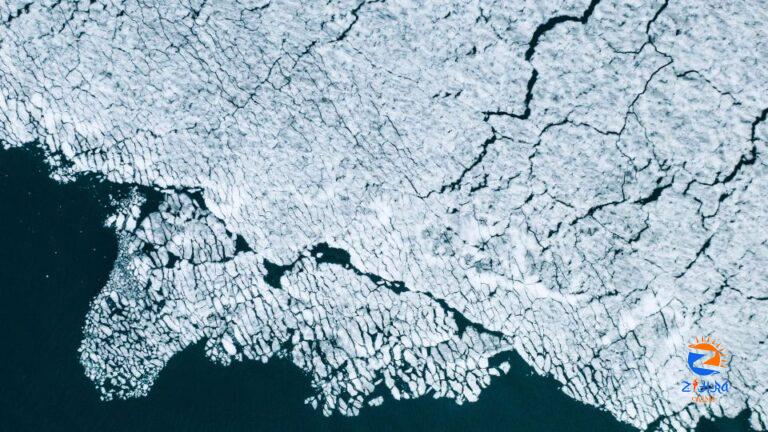
[ad_1]
The Arctic is seeing a rapid decline in sea ice even during the cold winter months when it should be recovering from the summer melt. Scientists say that one often-overlooked factor is playing a bigger role than previously thought: Atmospheric rivers.
These long, narrow bands of moisture in the atmosphere transport warm air and water vapor from the tropics. They can extend for thousands of miles and dump rain and snow when they make landfall.
In January, atmospheric rivers brought a parade of deadly storms that unleashed heavy rain, flooding and mudslides in California.
Now they are increasingly reaching the Arctic, according to a study by a team led by Penn State University scientists and published Monday in the journal Nature Climate Change.
Using satellite observations and climate models, the scientists found that atmospheric rivers are reaching the Arctic more frequently during the winter season, especially over the Barents-Kara Seas, off the north coasts of Norway and Russia.
The authors used satellite images to analyze sea ice immediately following the atmospheric river storms and discovered sea ice retreated for up to 10 days.
In winter, temperatures in the Arctic are below freezing and the ice should be recovering. Instead these powerful storms are slowing down seasonal ice recovery. The storms can be blamed for a third of the Arctic’s wintertime sea ice loss, the scientists reported.
“Arctic sea ice decline is among the most obvious evidence of global warming from the past several decades,” Pengfei Zhang, the study’s lead author and assistant research professor of atmospheric science at Penn State University, said in a statement. “Despite temperatures in the Arctic being well below freezing, sea ice decline in winter is still very significant. And our research shows atmospheric rivers are one factor in understanding why.”
Atmospheric rivers are inherently warmer than the surrounding Arctic environment and can act like a blanket, trapping heat near the Earth’s surface and preventing it from escaping out to space. Their heavy rainfall also has a melting effect, especially on fragile, re-growing ice.
Climate change is amplifying the intensity of atmospheric rivers, scientists say, as a warmer atmosphere is able to hold more moisture, leading to heavier rainfall when they make landfall.
Using climate modeling, the study also found evidence that global warming is one factor in the increased rate of atmospheric river storms in the Arctic.
The Arctic, which is warming up to four times faster than the rest of the planet, has undergone dramatic changes in recent decades. Last year, in its annual Arctic health checkup, scientists with the National Oceanic and Atmospheric Administration found it has become hotter, rainier and wetter, with a rapid decline in snow cover and unprecedented late season melting.
This latest report on atmospheric rivers adds another layer of complexity to those findings.
Marty Ralph, the director of the Center for Western Weather and Water Extremes at the Scripps Institution of Oceanography in San Diego, who was not involved in the research, said the study underscores the larger impact of atmospheric rivers.
“It is clear that the future of Arctic sea ice hinges to a significant degree on the strength and frequency of occurrence of [atmospheric rivers],” Ralph told CNN.
The loss of Arctic sea ice has significant consequences for the rest of the planet. The absence of reflective ice opens up the dark waters beneath, causing the ocean to absorb more heat, feeding into a cycle of melting and heating. The melting of freshwater into the ocean can also disrupt ocean circulation patterns, exacerbating global warming.
“Sea ice melting has a big impact for the climate system and for society, and our study finds the Arctic is an open system and that climate change is way more complicated than temperature change alone can explain,” Laifang Li, co-author of the study and assistant professor of meteorology and atmospheric science at Penn State, said in a statement.
[ad_2]